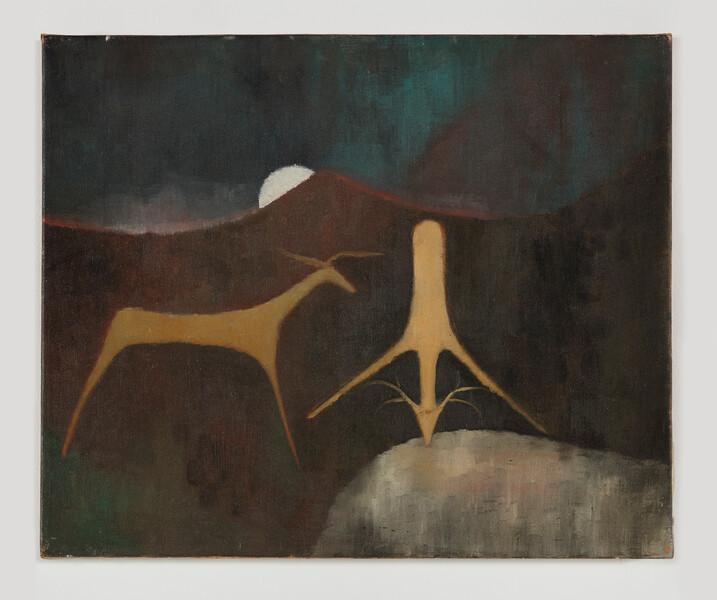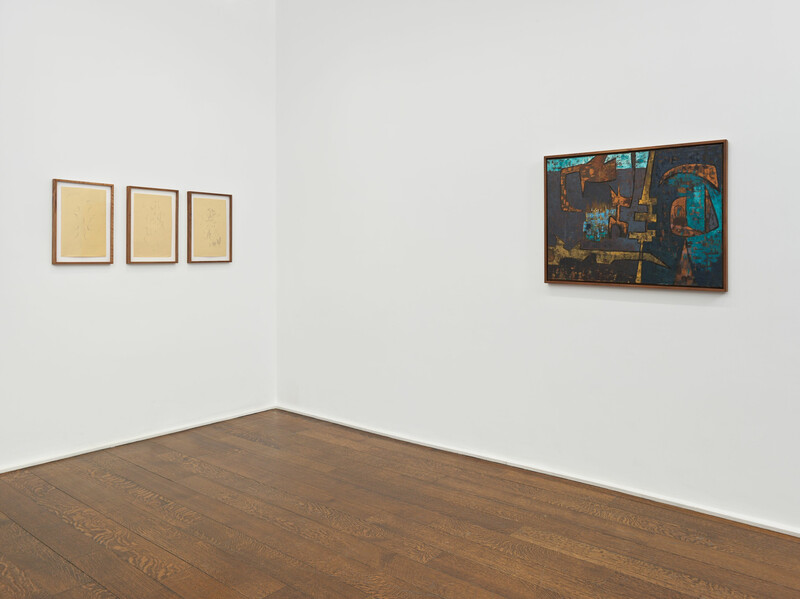
Luchita Hurtado
Dark Years
31 January - 6 April 2019
New York, 69th Street
Installation views
1 / 10
Related Content
About the Artist

Luchita Hurtado
Born in Maiquetía, Venezuela, in 1920, Luchita Hurtado dedicated over eighty years of her extensive oeuvre to the investigation of universality and transcendence. Developing her artistic vocabulary through a coalescence of abstraction, mysticism, corporality and landscape, the breadth of her experimentation with unconventional techniques, materials and styles speak to the multicultural and experiential contexts that shaped her life and career. Hurtado emigrated to the United States in 1928, settling in New York where she attended classes at the Art Students League. She relocated to Mexico City in the late 1940s and then moved to San Francisco Bay in the following decade. Eventually, Hurtado settled in Santa Monica, California and frequently visited her second home in Taos, New Mexico.
Although she associated with a vast network of internationally renowned artists and intellectuals, including members of the Dynaton, the Mexican muralists, and the Surrealists, Hurtado’s practice had always remained an independent pursuit. Her body of work cohered through an examination of self-affirmation, introduced in her early period from the 1940s to the 1960s. This output was defined by surrealist figuration, biomorphism and geometric abstraction, executed in brightly hued palettes with striking expressive range. Hurtado’s work continued to evolve throughout the 1960s and 1970s, demonstrating a fluid shift towards representative figuration that led to a production of contemplative self-portraits known as her ‘I Am’ paintings. Asserting her presence through a personal perspective of the body—rendered from above at skewed angles—Hurtado coalesced the viewer’s gaze with hers, utilizing the unexpected position of the floor as a backdrop and juxtaposing soft corporeal lines against the hard-edge geometric patterns of the environments beneath her. This series was followed by a group of surrealist ‘Body Landscapes’, in which human figures assume the form of mountains and desert sand dunes, as well as Hurtado’s late 1970s ‘Sky Skin’ series, where feathers weightlessly float in bright blue skies. The works from this period were informed by Hurtado’s newly reinforced feminist ideals and involvement with the Los Angeles Council of Women Artists. Many members of this group would later form the Woman’s Building in Los Angeles, where the Hurtado’s first solo exhibition was hosted in 1974.
In more recent years, Hurtado continued to explore themes of language and nature with her work, focusing on the planet, natural elements, and the environment in recognition of the urgency of the ecological crisis. These works function as symbolic proxies and intimate meditations on the Earth as mystic progenitor, underscoring the interconnectedness between corporeality and the natural world.
In 2019, Hurtado was listed in TIME 100’s most influential people and received the Americans for the Arts Carolyn Clark Powers Lifetime Achievement Award. Hurtado’s first solo museum exhibition, ‘I Live I Die I Will Be Reborn,’ opened at the Serpentine Sackler Gallery in London in 2019 when the artist was 98 years old. The exhibition then travelled to the Los Angeles County Museum of Art in February 2020.
Current Exhibitions
1 / 12




























